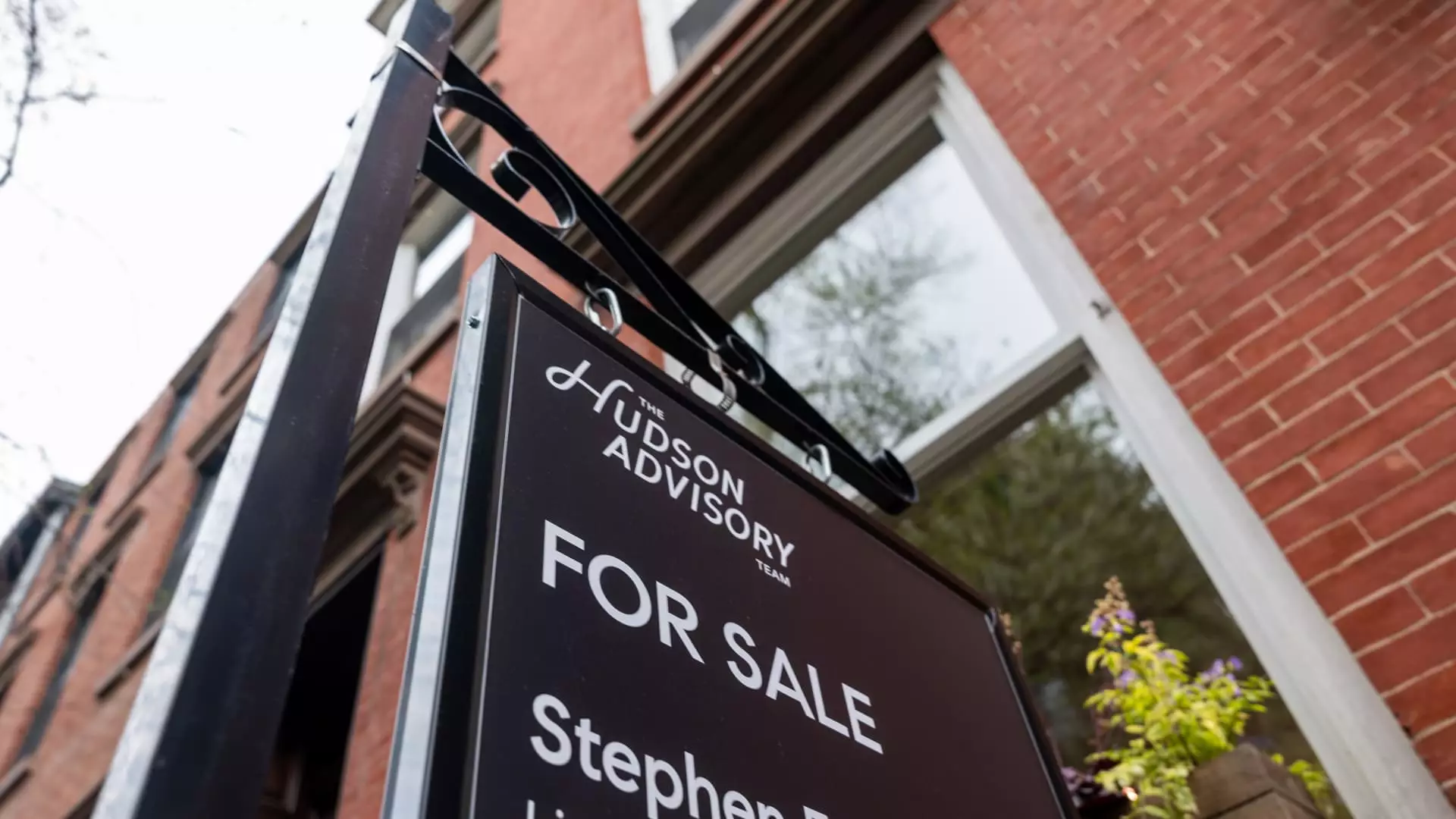The realm of mortgage rates has recently offered a turbulent experience, particularly for those seeking to invest in their dream homes. With the average rate of 30-year fixed mortgages now hitting a staggering 7.1%, we find ourselves navigating uncharted waters that echo economic shifts not seen in decades. This rapid increase of 13 basis points is more than just a statistical blip; it signals significant implications for homebuyers and the economy alike.
The Role of Tariffs and Inflation
Analyzing the rapid fluctuations, we can’t ignore the influence of President Trump’s controversial tariff policies. The imposition of hefty tariffs across various nations has ignited market anxiety, leading to spikes in bond yields. Initially, as the tariffs took effect, we saw a direct correlation with increasing mortgage rates. However, when President Trump rolled back some tariffs just hours after implementation, the resulting bond yield dip was short-lived. It’s perplexing to witness the pendulum swing in such stark extremes. The ongoing tariffs on Chinese imports, which stand as high as 145%, cast a long shadow over economic predictions. In this precarious environment, inflation expectations have also escalated dramatically—from 5% in March to a staggering 6.7% in April—the highest level since 1981.
Consumer Sentiment: A New Era of Doubt
Recent consumer sentiment reports have emerged as stark indicators of public anxiety, showing a marked decline that surpasses expectations. In a climate where the decision to buy a home is arguably the most significant financial commitment an average consumer makes, confidence appears to be at a premium. The tumultuous financial landscape is disheartening, especially as we’re in the crucial spring housing market period. Buyers understandably feel hesitant to move forward when the ground beneath their feet seems fraught with uncertainty and unpredictability. The latest inflation figures paint a bleak picture, making it clearer that many potential homeowners are weighing their options with a mix of apprehension and disbelief.
The Market: A Roller Coaster Ride
Matthew Graham’s insights echo the sentiments of countless financial analysts during these shaky times. His assertion that we are either witnessing the aftermath of the worst week in 10-year yield history since 1981 or merely a continuation of an average trend reminds us of the emotional roller coaster that accompanies place in the housing market. For individuals hoping to purchase their first home or refinance their existing mortgage, these rates signal an ever-changing landscape where timing is everything. It’s a situation that few, if any, would have anticipated just months ago.
The Bigger Picture: Homeownership and Financial Freedom
At the heart of this crisis lies a fundamental truth: for many, owning a home represents a key path to financial freedom and stability. As rates escalate, the gap between aspiration and reality widens. The burden falls on policymakers and economic leaders to create an environment where owning a home remains feasible for the average consumer. Shifting trends hint at broader economic implications that might pave the way for a reconsideration of existing financial policies. The dire need for solutions has never been clearer, and as housing affordability dwindles, it becomes paramount that we advocate for a more robust focus on sustainable financing within our economy.

Leave a Reply